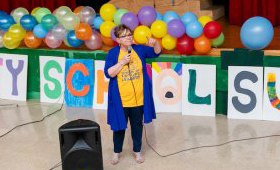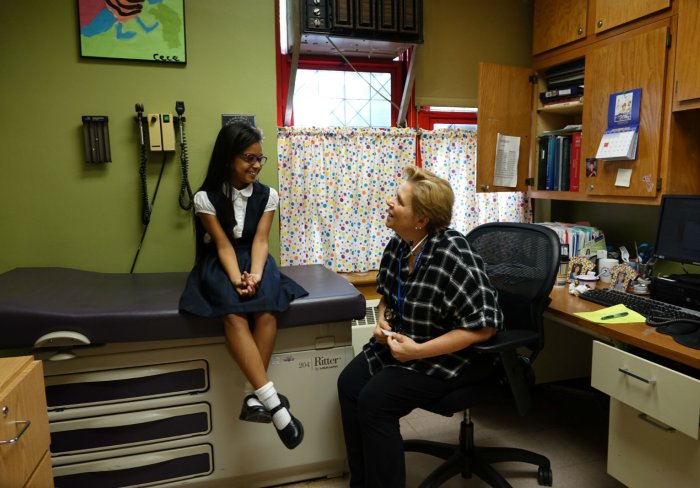There are many reasons children might miss school during the academic year: they develop a small cold, or their eyesight starts to get blurry, or they develop a stomach ache, to name just a few.
In response, a parent might keep the child home from school until she feels better, or to take her to their primary care doctor for a quick check-up. Either way, the child misses class time. School-based health centers (SBHCs), a crucial component of our community school strategy, offer an alternative that maximize in-class time and gets kids the health care they need when they need it.
SBHCs serve more than 200,000 young people across New York State—many of whom are black and Latino children living in low-income communities. While SBHCs were created to complement the work of a family’s primary doctor, for many children and youth in our services, Children's Aid SBHCs are their first and only access to health care. And so in addition to vision and hearing screenings, complete physicals, immunizations, and sick care visits, our health centers also offer services for management of chronic medical problems, such as asthma and diabetes; emergency and first aid; reproductive health and education counseling; as well as behavioral health services to support families affiliated with the school.
Children’s Aid has long operated five school-based health centers in Staten Island, Harlem, and Washington Heights, which all provide proactive health care for children and youth. And earlier this month, we opened a sixth SBHC in the South Bronx at the Charles Drew campus to expand the accessibility of quality, preventive health care. All students on the Charles Drew school campus can access health services at the center regardless of insurance coverage or citizenship, two major barriers for families in low-income and immigrant neighborhoods in accessing health care. More than 3,500 visits across the school year are expected at the school’s health center.
Perhaps the biggest advocates on campus for the new health center are Heather and Hayley, two of the center’s youth ambassadors. In addition to answering any questions their peers may have about the health center, they know firsthand that the health center is an important addition to their school community.
“It’s like my doctor’s office,” Heather said. “I know I can come here and feel better and I don’t have to miss school.”
The opening of the Charles Drew health center comes at a critical time: Congress recently failed to renew the federal Children’s Health Insurance Program (CHIP), which will leave 9 million children across the country without affordable health insurance. And plans to cut Medicaid would also affect health care coverage for many children and their families in New York City neighborhoods like the South Bronx.
Our Office of Public Policy, in partnership with program staff, have advocated on these issues on behalf of children and families in New York. “We continue to meet with our federal legislators about the devastating impact cuts to CHIP and Medicaid would have on the thousands of children, youth, and families we serve,” said Keyla Espinal Antigua, assistant director of public policy. “As an agency committed to eradicating poverty, empowering and educating staff, youth, and families about their ability to be advocates for social change through advocacy events and social media is a critical resource that we provide to help them let their voices be heard.”







